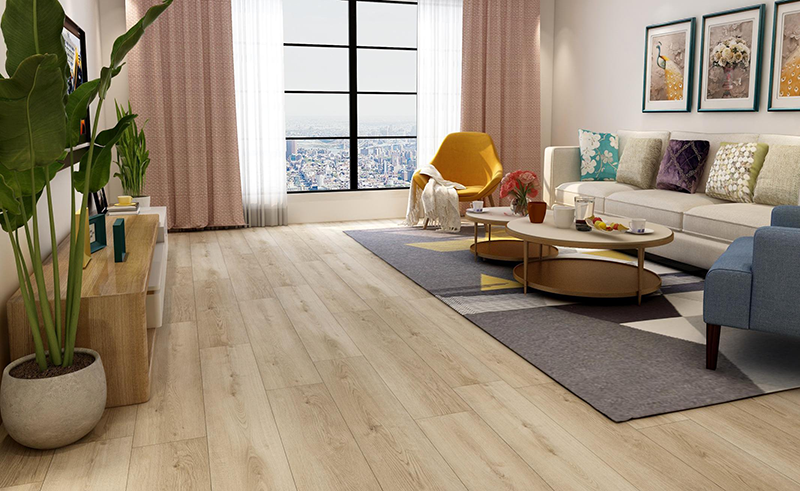Loose lay flooring has become a popular choice for homeowners and commercial spaces alike. Its ease of installation, versatility, and ability to mimic natural materials like wood and stone make it a go-to flooring solution. But like any flooring material, proper maintenance is essential to ensure it remains in top condition for years to come.
In this blog post, we’ll explore practical, easy-to-follow maintenance tips for loose lay vinyl flooring — helping you preserve its appearance, durability, and performance.

What is Loose Lay Flooring?
Before we jump into the maintenance tips, let’s briefly understand what loose lay flooring is. Loose lay vinyl flooring is a type of luxury vinyl flooring that doesn’t require glue, nails, or click-lock installation systems. The planks or tiles are designed to lie flat on the subfloor, held in place by their heavy backing and the friction created between the flooring and the subfloor.
This installation method makes it extremely easy to replace damaged pieces or update your flooring without a full overhaul.
Why maintain loose lay floor?
Even though loose lay flooring is known for being low-maintenance and highly durable, regular care is still crucial. Here’s why:
Preserves appearance: Regular cleaning prevents dirt and grime buildup, keeping your floor looking new.
Extends lifespan: Preventing damage from moisture, scratches, and heavy furniture helps your floor last longer.
Improves indoor hygiene: Clean flooring contributes to a healthier indoor environment, especially for kids and pets.
How should you maintain loose lay flooring?
Daily Maintenance
1. Sweep or Vacuum Regularly
Dust, sand, and debris can act like sandpaper and cause micro-scratches over time. Use a soft-bristle broom or a vacuum cleaner without a beater bar to remove dirt regularly — ideally once a day in high-traffic areas.
Tip: A microfiber dust mop is gentle and effective for loose lay vinyl flooring.
2. Wipe Spills Immediately
Loose lay vinyl is water-resistant, but it’s still good practice to wipe up any liquid spills quickly. Prolonged exposure to moisture can weaken the adhesive friction or seep into the subfloor through seams.
Don’t use steam mops — high heat and moisture may cause planks to curl or lose grip.
3. Use Doormats
Place mats at all entryways to trap dirt and moisture before it reaches your floor. Choose mats with a non-rubber backing to avoid potential staining or discoloration.
Weekly and Monthly Cleaning
4. Damp Mop with Mild Cleaner
Once a week or as needed, use a damp (not soaking wet) mop with a pH-neutral vinyl floor cleaner. Avoid harsh chemicals like bleach, ammonia, or vinegar, as they can degrade the protective wear layer.
If you prefer a DIY solution, mix a few drops of mild dish soap in warm water.
Avoid using wax or polish — loose lay vinyl is designed to maintain its sheen without them.
5. Check for Shifting or Gaps
Since loose lay planks are not fixed with glue or click-locks, they may shift slightly over time. Periodically inspect the seams and edges to ensure everything is properly aligned. If needed, lift and reposition any shifted planks.
Preventive Measures
6. Use Protective Pads
Install felt pads under furniture legs to prevent scratches and dents, especially under heavy items like sofas or dining tables. For rolling furniture like office chairs, use a plastic mat to avoid wear.
7. Limit Direct Sunlight
Over time, direct UV rays can cause discoloration. Use curtains, blinds, or UV-protective window films to reduce exposure.
8. Avoid Dragging Heavy Items
When moving heavy furniture or appliances, always lift instead of dragging them. Dragging can damage both the surface and the edges of the vinyl planks.
Deep Cleaning (Every 2-3 Months)
A deeper clean is recommended every couple of months or if your floor has seen extra wear (e.g., after a party or renovation). Here's how to do it:
Sweep and vacuum to remove surface debris.
Mop using a diluted vinyl-safe cleaner.
Rinse the floor with clean water to remove any cleaner residue.
Dry thoroughly with a microfiber cloth or towel.
If you have stubborn stains, spot clean with a damp cloth and diluted cleaner. Avoid abrasive scrubbers.
If you encounter the following problems
Buckling or Lifting Corners
Cause: High humidity or poor subfloor preparation
Solution: Reposition the plank, ensure the subfloor is dry, and consider using double-sided flooring tape for problematic areas.
Scratches or Scuffs
Cause: Shoes, pet claws, furniture
Solution: Use a vinyl floor repair kit or marker to blend light scratches. For deep damage, replace the affected plank — a simple task with loose lay flooring.
Mold or Odors
Cause: Moisture trapped under the floor
Solution: Lift the affected area, clean and dry the subfloor, and reinstall. Ensure proper ventilation and consider a dehumidifier in humid regions.
Conclusion
Loose lay vinyl flooring offers an ideal mix of style, comfort, and ease of use — but maintaining its beauty requires consistent care. The good news? It doesn’t take much. With regular cleaning, a few preventive measures, and occasional deep cleans, your loose lay floors will remain an attractive and durable part of your space for years to come.
Whether it’s your home, office, or retail space, following these maintenance tips will keep your flooring investment looking its best.
Looking for more flooring tips or product recommendations?
Stay tuned to our blog or contact us for expert advice tailored to your needs!
English
العربية
Français
Русский
Español
Português
Deutsch
italiano
日本語
Nederlands
Polski
አማርኛ
Bahasa Melayu
Filipino
Bahasa Indonesia
magyar
Română
Čeština
Монгол
қазақ
Српски
Kiswahili
Slovenčina
Norsk
Svenska
українська
Ελληνικά
Suomi
Հայերեն
עברית
Latine
Dansk
Shqip
Hrvatski
Afrikaans
Gaeilge
Eesti keel
Māori
latviešu
Azərbaycan dili
Euskara
Беларуская мова
Bosanski
Български
Català
Galego
ქართული
ʻŌlelo Hawaiʻi
Lietuvių
Македонски
isiZulu
















